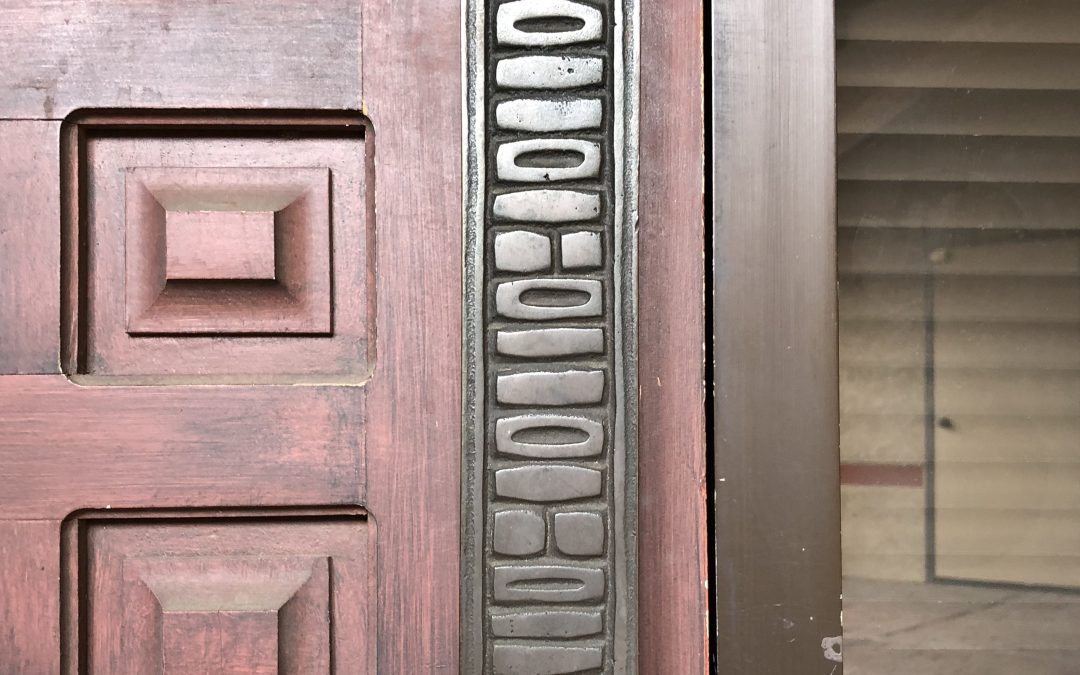
by Lara Serbin | Feb 6, 2025 | Blog, Uncategorized
The LSW Engineers Arizona Tenant Improvement project that started in 2023 is complete. In a previous post I mentioned that the exterior of the building was 1970 Arizona of heavy textured tortilla chip colored stucco and terra cotta clay roof tiles; and heavy bronze window frames.
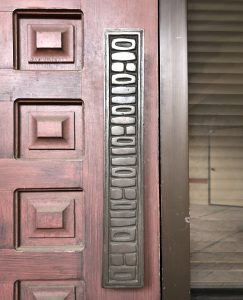
Existing bronze frames
Ego steps in and tempts you to leave your designer mark. It takes self control to go in the opposite direction and actually work with what is there; like John Ruskin’s idea of being true to existing architecture.
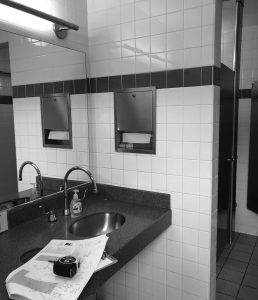
Restroom Before Remodel
” …the love and the thoughts of the workman more than his work: his work must always be imperfect, but his thoughts and affections may be true and deep.” – John Ruskin, Stones of Venice I
Jeffrey and I had to look in the dark corners of many tile showrooms in Arizona to find light ivory floor and wall tile among a sea of gray and yellow tiles. The field tile for both walls and floors is a 12″x24″ glazed porcelain called Porto II Jute Ivory found at Emser Tile in Arizona. The original accent tile to go above the sink didn’t work out since we failed to provide enough float space for the tile. The result was a toothy smile with no grout to speak of. The entire wall had to be removed and Jeffrey and I had to shop for a new tile and come up with a new design! We found the perfect solution at Floor & Decor. Floor & Decor has nifty high tables to set tile samples and play with arrangement. I just grabbed a brochure and saw the glass tiles arranged in a herringbone design and it made sense.

LSW Restroom Remodel
The existing brick pavers right outside the bathroom is herringbone.
The bronze Arcadia door came out nice and it blends with the existing door and window frames of the building.
I enjoy the hunt for matching the fabric of an existing building detail.
Specifying a bronze window frame rather than a modern window frame is being loyal to the existing building style. Some areas of the design should be a literal match and others can have a matching color. I don’t think everything has to match. You must have priorities in the overall picture.
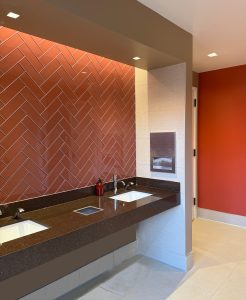
LSW Engineers Tenant Improvement
The construction credit for the project goes to Stevens-Leinweber Construction, Inc.
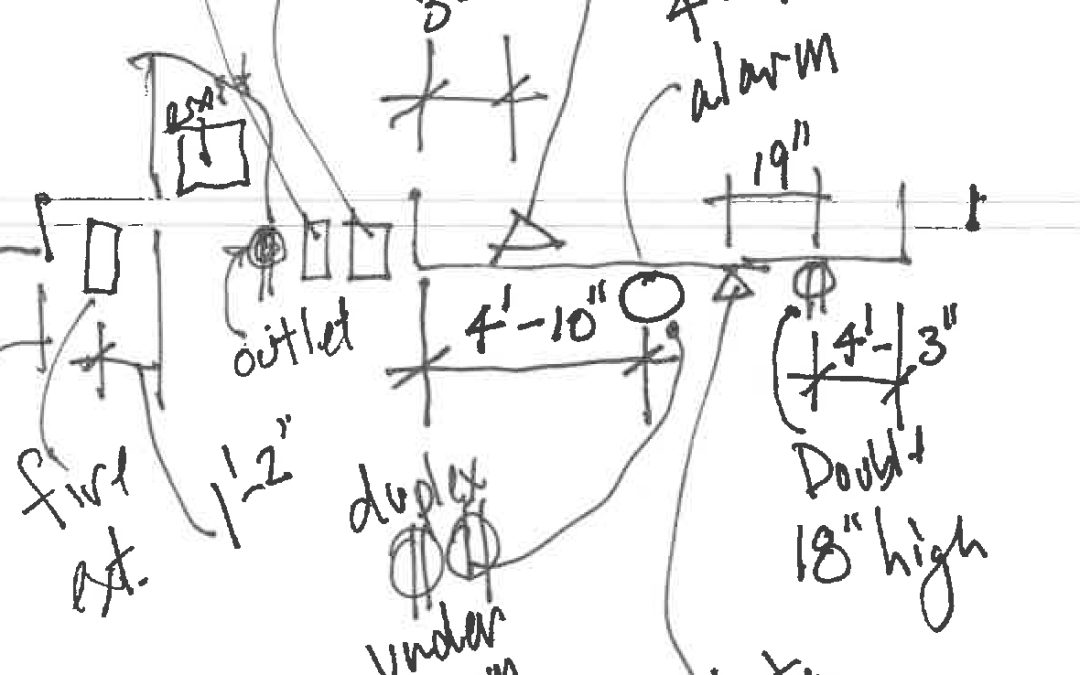
by Lara Serbin | Jan 19, 2024 | Blog
Field measuring doesn’t involve blades of grass. In the architectural universe, field measuring is a process of recording existing conditions of a building. A “field” is a piece of property on planet Earth with precise coordinates. An architect loves to say “Yeah, I was out on the Field today!” If you own a piece of property and there is an existing building located on it, an architect will have to measure the building before any new or existing building addition can be designed. The existing fixed objects within the property or “field” have to be accurately located and recorded.
After measuring an existing building, we record the findings in drawings such as site and floor plans and elevations; these drawings are referred to as As-Builts.
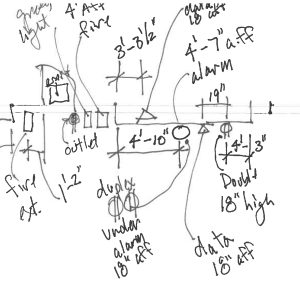
Field Measurements
We record the findings and draft the work from the “Field” investigations.
We bring a drafted floor plan to Field Measuring so there is a point of reference. If the building owner doesn’t have As-Builts which is mostly the case, we use Google maps to trace at least a rough outline of the existing buildings before we head out to the “Field” with our tape measures and laser gadgets. Also, if you have a set of drawings of your existing building it is not called a set of blue prints. That would be like saying your flip phone is your social media feed. A blue print is just a stone age way to make copies by holding large blue paper in a powerful blinding light and the nasty chemical smell that makes the lines white and the background blue. We all make copies with black laser on white paper now.
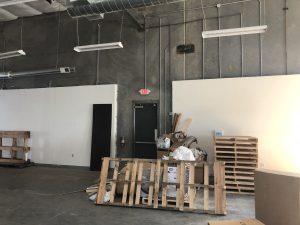
Move Objects along the Wall
A good architect never assumes an existing condition will be handled during construction.
Start measuring at one corner and work clockwise direction so you don’t miss anything. It is important to document every outlet, data, fire alarm, fire extinguisher, and thermostat. If there is furniture or objects in the way of seeing that important thermostat, move it! If we spot a switch that we are not familiar with we ask the building owner, realtor, or contractor what it is. Some may say that this is too thorough but I disagree. It is much cheaper to document all the detail in the beginning.

Conduits and J-Boxes
Working drawings to obtain a building permit are created from As-Builts.
A base drawing is created with new enhancements to the space. The photo above shows the furred out walls to continue to the underside of the roof deck. The base drawing in AutoCad is shared with Structural, Mechanical, Plumbing, and Electrical Consultants. Each of those engineers will perform a Field Measurement of the space as well. In this project it was directed by the electrical engineer to remove all the existing conduit and start over with new conduit and J-Boxes. I don’t feel it was a waste of my time to have located all the initial locations of which would be ripped out. I learned the space. After I field measure the space I feel as though I own it. When I return each time it is easier to engage with the construction reviews.
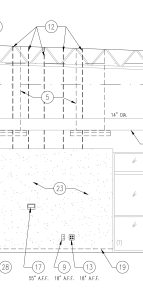
Working Drawings
The drawing above is an elevation of the final working drawings. Every existing and new outlet, duct, structural member has a keynote with an action for the contractor to make.
It feels great to think of ahead so there are less questions in the “Field” during construction.
Tenant Improvement in an existing space is more complicated than just building brand new because there are things to be demolished and things to remain. You can’t just draw a keynote that says move this electrical panel. You must have a plan, you must think it through and work as closely as possible with your engineers.
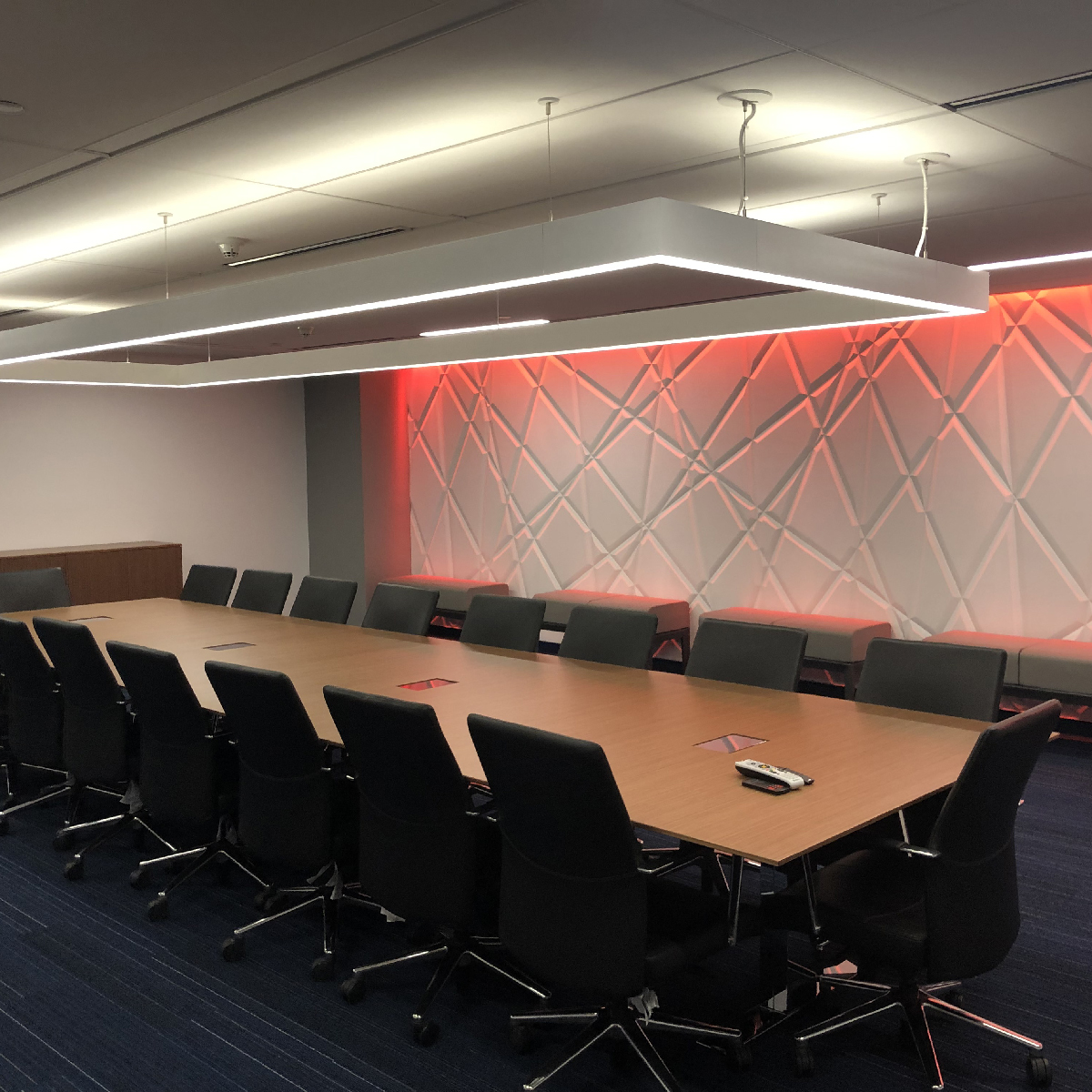
by Jeff Serbin | Dec 7, 2018 | Architecture, Blog, Data Center Design, Interiors, office architecture, office design arizona, office improvement, phoenix architects
Conference Room Interior Design
If conference room walls could talk. Designed to hold confidential conversation behind closed doors, these spaces must be adequately sized, comfortable and designed to allow people to connect. Flexibility is key in a facility where a presentation can be among a few to a large group.
The original facility for this fortune 500 technology company has several small conference rooms that were architecturally tired and able to handle up to about dozen occupants each at a time. The facility desired a large conference room that could easily hold up to 2+ dozen participants, technologically current and bring a bit of grandeur to a space which harked back to the 1980’s.
Solution
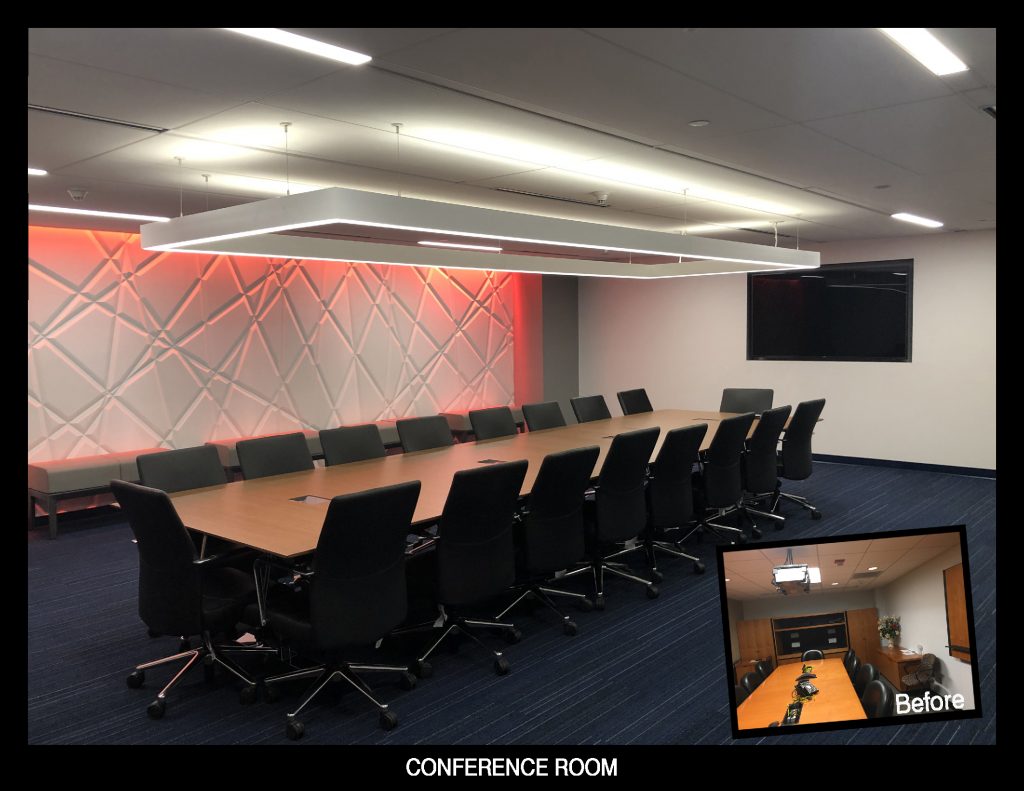
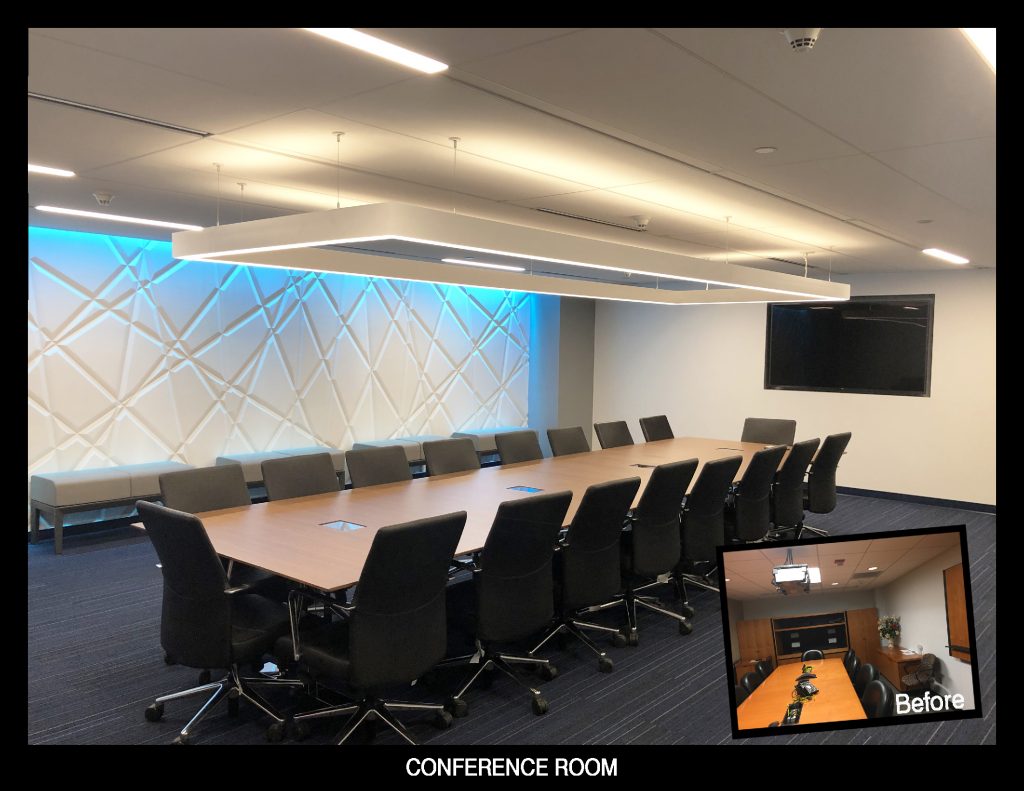
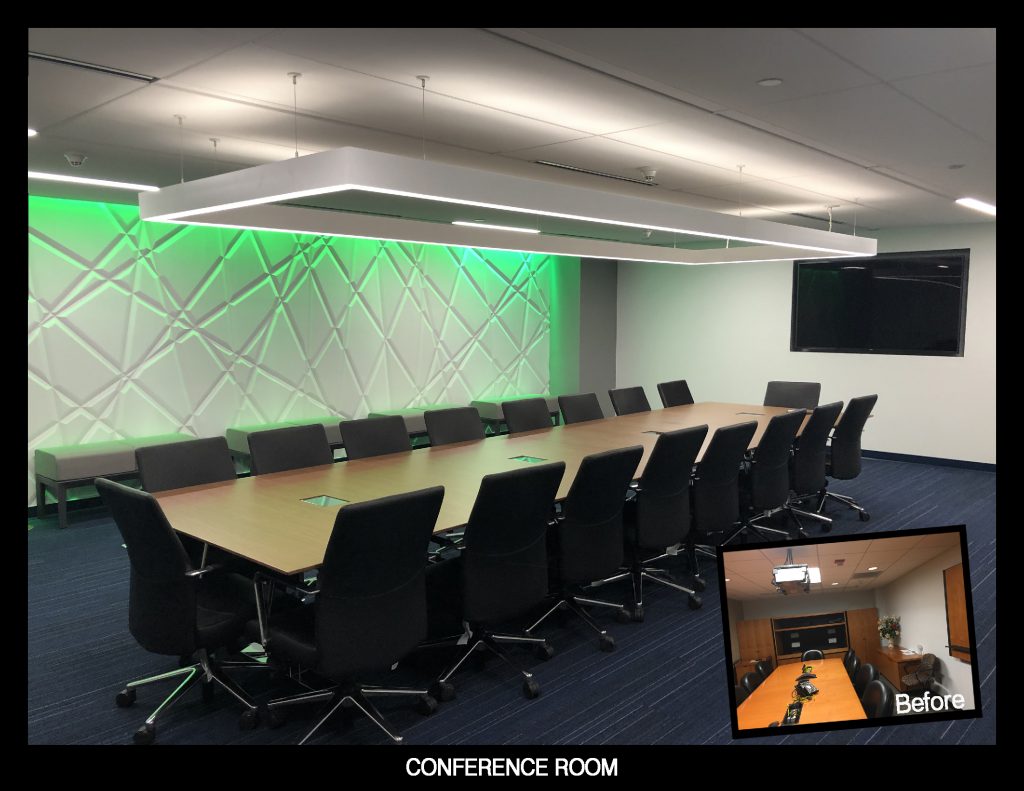
The solution was to combine two rooms into one large space. New finishes and furnishing were a must. A feature wall was incorporated (Interlam). One large continuous table (Nucraft Flow) was provided seating a total of 18. Additional benches (Steelcase Regard) around the perimeter allowed for additional seating. Floor finishes on a raised access floor included carpet tiles (Interface).
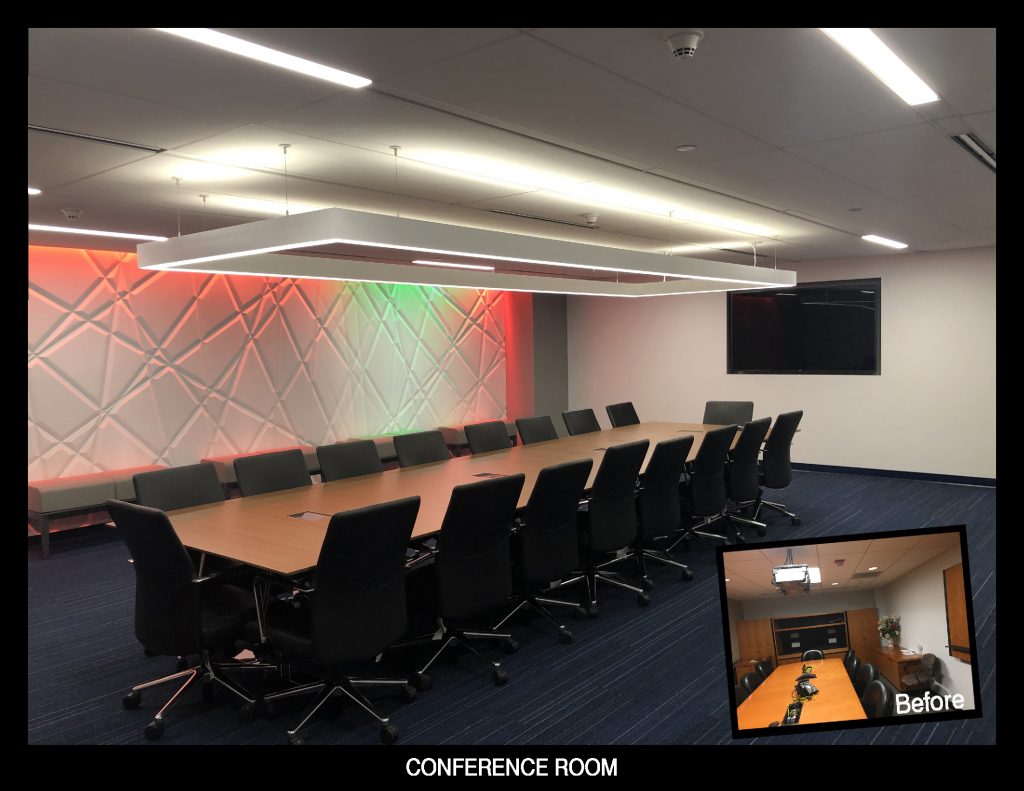
The accent wall was incorporated with color changing LED lighting allowing for a flexible mood of the space. If it is the dead of summer, a cool blue hue can achieve a cooling effect. On a cool wet winter day, a bit of red light can bring warmth. Wanting to focus on the bottom line, add a bit of green. If you looking to celebrate the holidays, add a bit of revolving color to add a little festive vibe.
If your conference room interior design is in need of an update, new finishes, furnishing and technology can bring your facility into the 21st century.
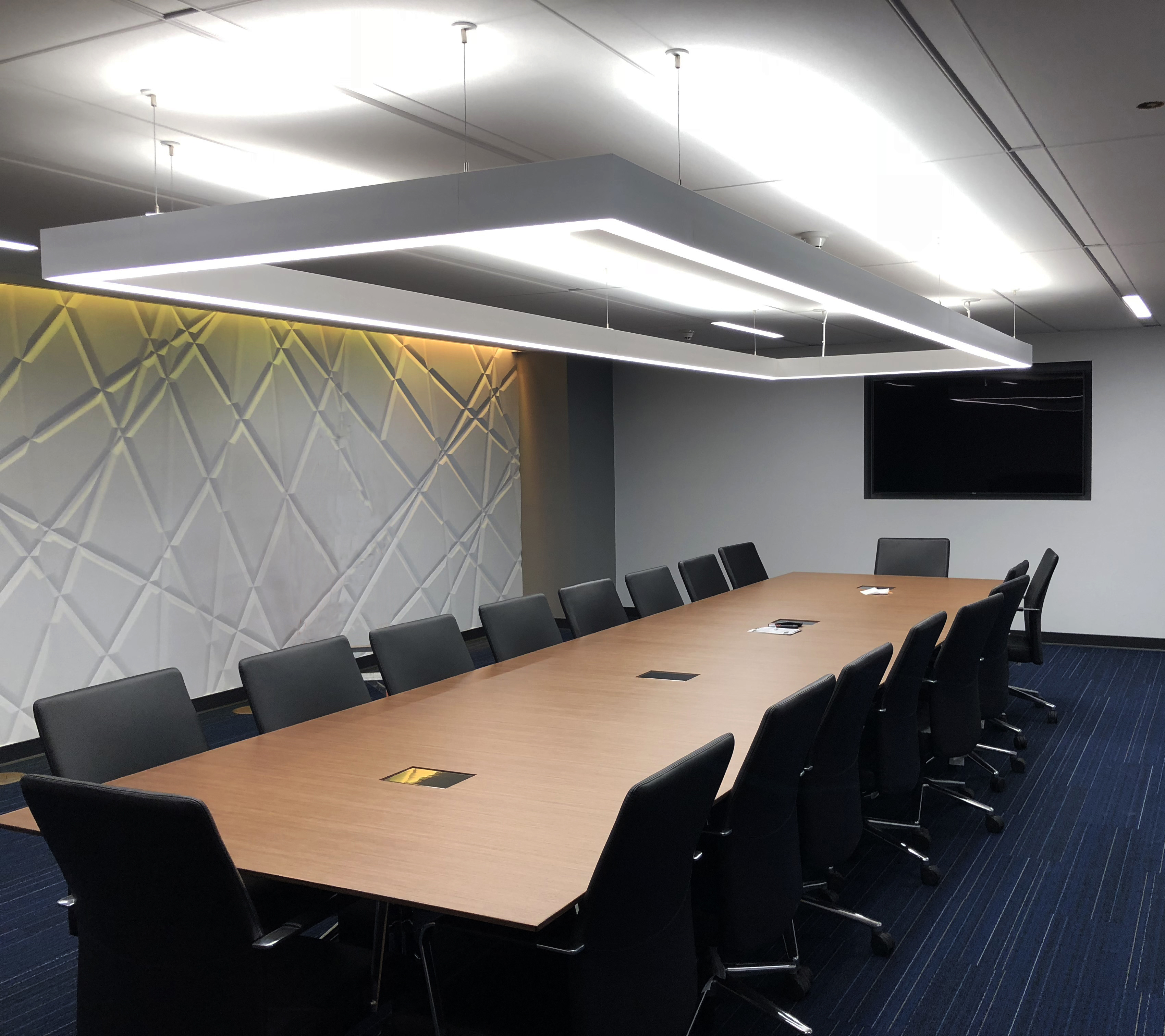
by Jeff Serbin | Jul 12, 2018 | architect in Arizona, Architecture, Blog, Interiors, office architecture, office design arizona, office improvement, phoenix architects, Planning, Uncategorized
Office Architecture in Arizona
When finding an office Architecture in Arizona for rent within existing real estate, some research should be completed before signing a lease. Relying on a Realtor may not provide you with the full spectrum of issues regarding your office improvements. If you are making modifications and doing a tenant improvement, hiring an architect to do this initial research can inform you about potential modifications required by zoning and building code requirements. Even if you are looking at merely changing some finishes, other factors may affect the project scope.
Items to look at:
- Building code of original construction
- Current Building code and its impact upon proposed use
- Type of occupancy at time of construction vs. type of occupancy proposed for your use
- Zoning and intended uses
Because each building and space is unique within office architecture, the architect will need to look at the original set of approved drawings and determine what changes may be required. Changes in occupancy or changes in code can affect the project.
Below is a Case study (example) of a past project. The client initially thought it was mainly going to upgrade some finishes and adding a few walls and doors. However once some research was done, the project scope grew.
Case Study
Project desired scope: Lease approximately 4,000 s.f. office space within existing building with minimal modifications. Upgrade to finishes as needed.
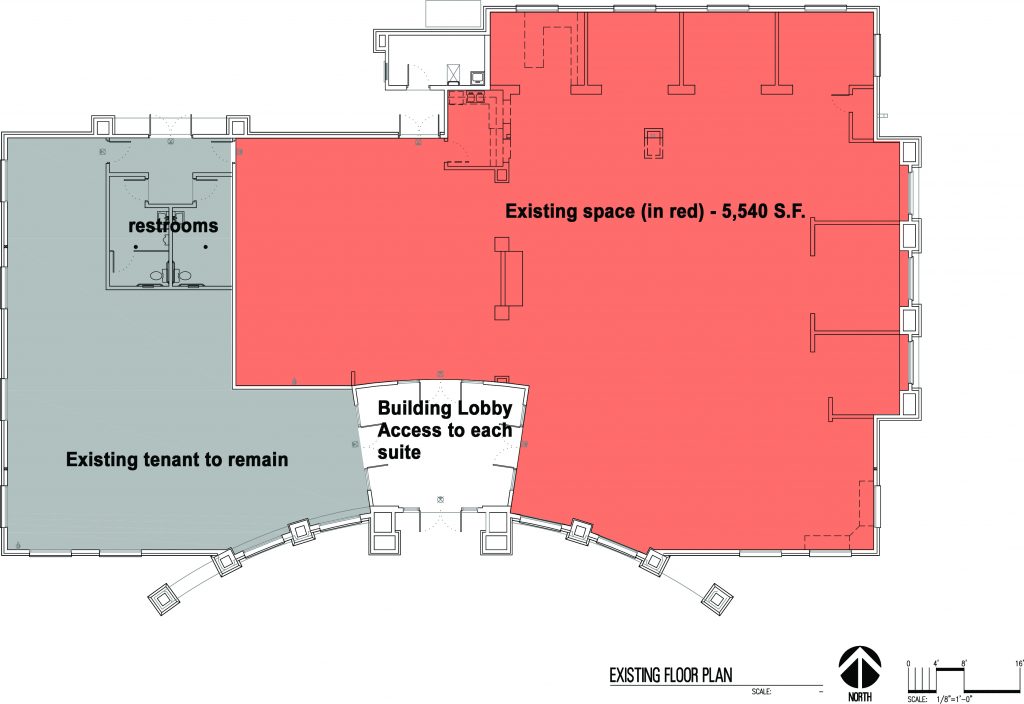
Office Architecture in Arizona – Existing building space available (shown in red)
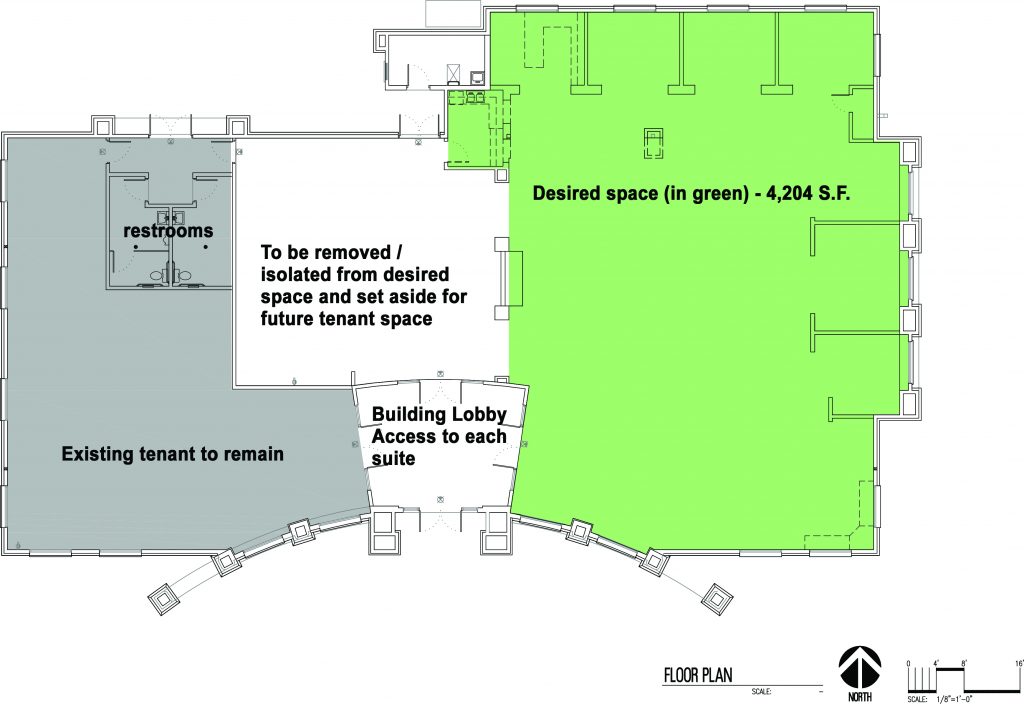
Office Architecture in Arizona – Proposed space (shown in green)
Analysis
The area in green is the desired quantity of space the tenant desired and which sensibly works with the division of the space due to existing walls allowing for a future tenant to be located within the center suite. This allows for each tenant, to remain unaffected, to have accessibility to entry lobby and existing restrooms.
Issues to Address
- Restrooms not accessible to proposed office space unless you travel through middle suite.
- Verify if restrooms (# of fixtures or toilets) meets current codes.
- Potential issue with exiting. # of exits and travel distance to exits will need to be analyzed.
- Determine if mechanical system zones (area the mech unit serve) is not affected by proposed leasable space.
- Determine if electrical systems are distributed properly for a division of the space into 2 separate suites.
- Verify number of parking spaces required/available affected by the proposed modification.
Analysis
It was determined that the existing building, constructed about 25 years ago, was initially designed as a product showroom, not offices. It was initially established as an Occupancy A (Assmebly) Proposed use of the new tenant was to be Occupancy B (Office). Based upon our code analysis, it was determined it had an affect on conflict 2 or quantity of toilets as explained below.
Conflict 1 – Restroom not accessible to space. A corridor was added to allow for access to the existing restrooms while adding a second exit from the space.
Conflict 2 – Verify restrooms meet code. Because Assembly occupancies do not require as many plumbing fixtures than Office space per occupant, the existing quantity of restrooms were adequate in the original use. With the change of occupancy to ‘B’ Office, the # of plumbing fixtures was not adequate. Therefore, one additional toilet stall was added to satisfy codes. (see calculations below). To minimize affecting the original restroom (not affecting its use by existing tenant and affecting existing finishes), it was decided that a 1 person restroom would satisfy the requirement of an additional toilet fixture. This was not a desired addition to scope because of the additional construction cost, but solely to satisfy the building code requirements.
Conflict 3 – Potential issue with existing? The office space as proposed met all exiting requirements. Quantity of occupants did not exceed the number to trigger additional exits. However, because of the accessibility to the restrooms, a second exit was provided.
Conflict 4 – Determine if mechanical system zones need modifications. Because of the original layout, the mechanical zones were not exactly divided into the zones that were established by the new wall creating the future tenant space. Therefore, ductwork modifications and a new mechanical unit was required to allow for the mechanical systems to function properly. This was an unknown addition to the project that the real estate agent would not be able to forsee.
Conflict 5 – Determine if electrical systems are distributed properly. It was determined, not to our surprise, that the electrical systems required separation of power to the 2 suites created. In reality, it could have remained more or less the same but by isolating the power, it allows for the building owner to clearly understand how much power each individual suite utilizes.
Conflict 6 – Is the number of parking spaces required/available affected? Fortunately because the occupant load from Assembly to Office reduced the number of occupants within the space, the number of existing parking spaces were more than adequate. No changes required.
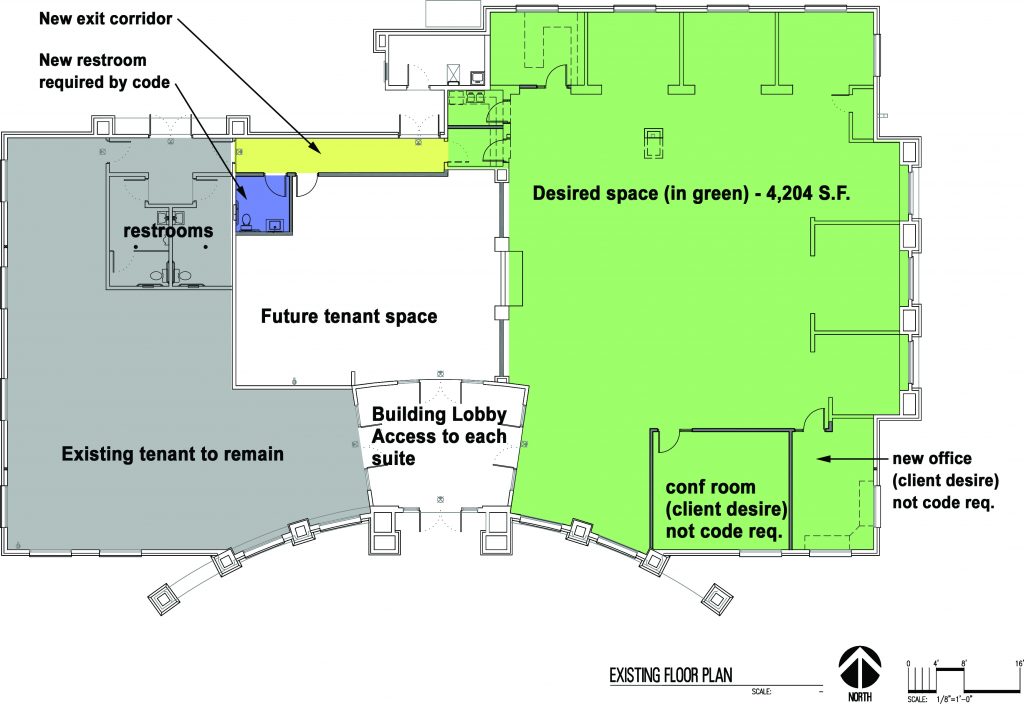
Office Layout
Additional code analysis information
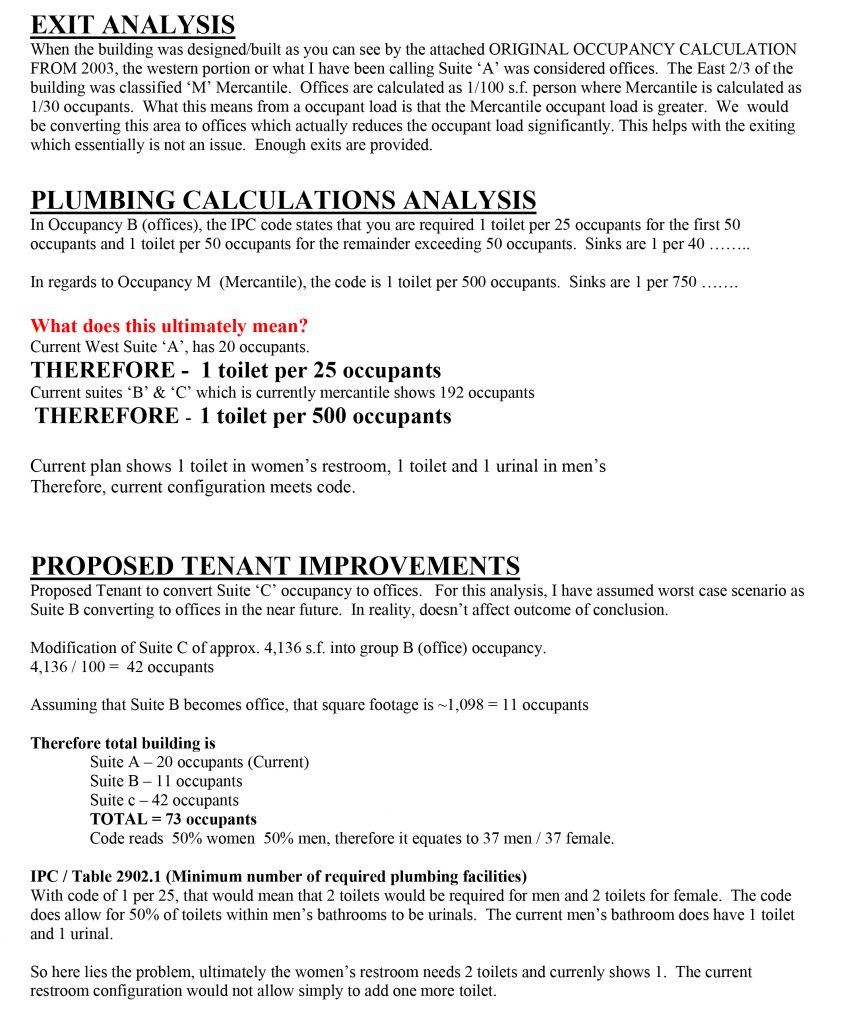
Summary
When finding an office space for rent, even in a simple remodel as shown in the case study, you can see how important research of issues are prior to signing a lease. The analysis will provide you with a more clear understanding of the possible scope due to modifications to the existing building systems, required updates due to current building codes and occupancy changes.
If you are considering an office architecture in the near future, hiring an architect can help you make good choices.
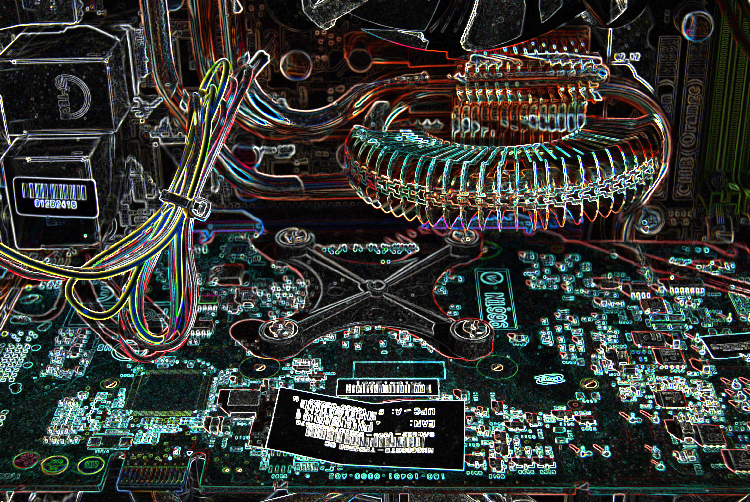
by Jeff Serbin | Jun 19, 2018 | Architectural Planning, Architecture, Blog, Cloud Computing, colocation, Colocation Data Center, Data Center Design, Data Hall, Interiors, Planning, Uncategorized
Renovation of Data Center buildings
Since, 2004, or the past 15 years, Serbin Studio has been re-designing Data center buildings in Arizona. As computer storage and computing continues to grow due to new technologies, buildings are requiring more data storage. Since 2004, data hungry companies have been adding to the required storage on the web, such as Facebook (2004), Netflix (1997), Wikipedia (2001), Amazon Cloud Computing (2005), Apple / Iphone (2007), Black Friday web (2005), Youtube (2005) etc. During the life of these buildings within existing colocation (cloud) facilities, tenants move in and out of leases. This creates opportunities for data centers to refresh and update their systems to meet current demands and upgrade to new equipment for better efficiency. Prem Data Centers also need to be refreshed or expanded to meet current and future needs as companies grow or change.
Colocation Data Center or Cloud computing – “Multi-tenant environment that is contained within a building outside of a company’s facility. It can house all the companies data or be a backup facility for disaster recovery. The data hall environment can be maintained by the tenant (triple net lease) or all operation of the systems (ie. power distribution, mechanical cooling etc.) can be maintained by the Colocation Facility. Cloud computing allows a company to minimize infrastructure of onsite while having a backup to their data in a maintained secure environment”
On Prem Data Center – “Refers to private data centers that companies house in their own facilities and maintain themselves. Benefit to onsite is ultra controlled environment with minimal latency. It is measured in Mbps or Megabytes per seconds.“
Latency – Delay of transfer of a packet of data from one designated point to another. This can be affected by number of router hops. Since data centers can be physically located anywhere in the world, a customer may want to consider the geographic location of their data to minimize delays.
In Colocation facilities, when tenants move in/out, the new tenants needs are unique and the Data Halls are updated internally. Improvements to Data Center facilities don’t just stop at at the Data Hall. Common meeting spaces such as Lobby’s, customer lounges, conference rooms, common hallways, restrooms etc. need refresh as well. Exterior of buildings also require updates to be competitive with new facilities.
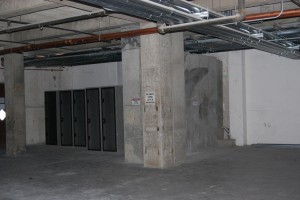
Raw space within Data Center building prior to remodel
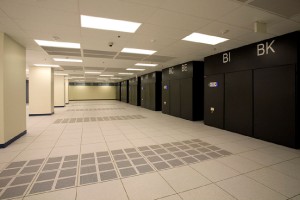
Data Hall remodel prior to Colocation tenants moving into space
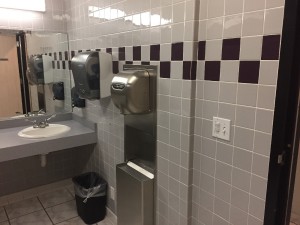
Data Center restroom prior to remodel. Circa 1980’s design
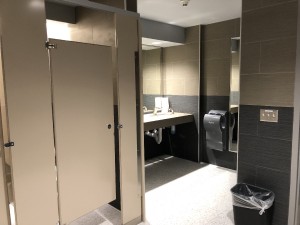
Restroom remodel in progress prior to completion. Terrazzo flooring, ceramic tile full height walls, solid surface counter with undermount sink etc.
Installation of new mechanical systems can upgrade the cooling capacity of the Data Hall. New power distribution systems and lighting systems can provide additional power and improve building efficiency.
Two types of Architects are required for a successful Data Hall environment.
Data Center Network Architect – “Design and support in the network planning, network architecture design, hardware and software, transmission and signaling links and protocols for a complete computer network. They evaluate new products and perform network problem resolution. Develop technical standards …… etc.”
and
Data Center Building Architect – “Design of building systems to support the Data Hall environment including a safe and secure invironment with adequate power and cooling required within the space to support server equipment. Buildings are designed to structurally support the equipment as electrical equipment can be quite heavy. Architects specialize in the design of support spaces (ie. lobby, offices, conference rooms, restrooms, customer lounge etc.) to provide a comfortable working environment.”
Serbin Studio specilizes in Data Center Building Architecture. We have put together a highly experience team of architect, Mechanical, plumbing , Electrical Engineer and structural engineers and other necessary design support to ensure quality, efficient and timely designs. Projects can be design-bid-build and design-build. The design team can handle all aspects of renovations to existing Data Center facilities and New builds. From small power upgrades to a rack, building cooling upgrades, Common space remodels, to conceptual space planning, our team is ready to handle any task. Since 2004, we have facilitated over 300+ projects ranging from several thousand dollar upgrades to multi million dollar upgrades to existing facilities.
























